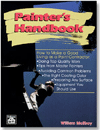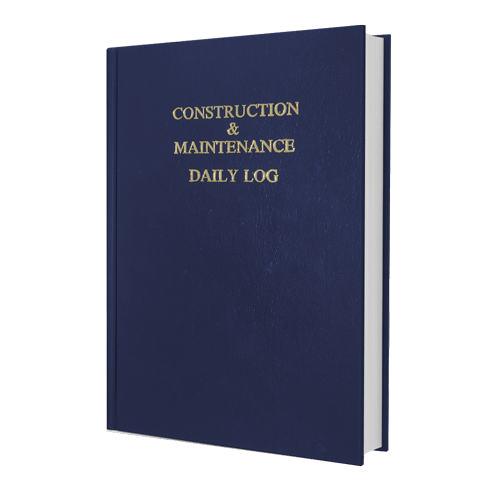
Cement plaster is unique, as it can be applied
to any curved surface, then set to be hard and durable as a rock.
All exterior claddings are unique but no exterior cladding is more unique than cement plaster. Cement plaster (stucco) is applied in a soft plastic like state, following any form or shape so desired and then allowed to set to a hard, durable, long-lasting finish. And if that is not unique enough, the final texture can be anything from smooth as glass to rough as the Rockies. The final texture is truly only limited by the imagination of the designer and the talent of the applicator.
Plastering is part science, art and craftsmanship; finding the tradesmen that can be all three is no easy task. The science comes in the form of knowing your materials; what sands, cements, lime and acrylics can and cannot do; what materials will work over another; which are certain failure.

Smooth trowel cement will have
mottling and imperfections, just
what this owner wanted.
Finish coats for Portland cement plaster are either cement based or acrylic based. Both are suitable over cement plaster basecoats and each has separate and unique qualities, characteristics and variations.
Acrylic finish: We consider these finishes to “dry” to a set. Similar to paint, they tend to darken as they set. The colors are unlimited with acrylics and local dealers can tint to match just about anything. Colors also tend to be very uniform and consistent, unless it is the intent of the designer and applicator to induce mottling. Acrylics are more flexible, repel water and do not change color when hit by rain. They cost a little more per square foot for material as compared to cement finish and are somewhat limited in textures. It is strongly recommended to use plastic nose cornerbead with acrylic finishes.
Cement finish: Also known as “stucco,” it cures to a final set and like all cement, it lightens as it dries out or fully sets. Cement can only hold so much pigment and colors are recommended to be lighter tones or pastels. Colors are not as uniform as with acrylics and depending on the texture selected, some mottling should be anticipated. Textures are unlimited with cement finishes. It is strongly recommended to use wire nose corner reinforcement with cement finishes.

A light-lace texture provides an attractive
finish
and hides minor imperfections.
Smooth finish stucco is always problematic for plasterers. First, a smooth finish highlights every imperfection; cracks will stand out twice as much as compared to a similar crack on a rougher sand finish texture. Cracking issues can be exacerbated by the action required to make the plaster smooth. Water troweling the cement smooth forces the sand to the bottom of the thin finish coat and brings the plaster paste to the surface. This is often called the “fat” or “cream” used to fill minor imperfections and create a surface smooth. The plasterer has limited time to make it happen and the end result is an unavoidable thin, rich cement layer across the top surface. A thin cement rich layer will crack and, as mentioned, the smooth finish will make that crack stand out like a sore thumb. It’s just the way it is. This is why plaster bureaus try to dissuade architects from selecting a smooth finish for exterior plaster.

Cat Faces in a texture can add character to a
finish but keeping it randomly consistent can be a challenge.
The Technical Services Information Bureau has a publication called “Plaster Textures & Acrylic Finishes.” In this publication and others, “Santa Barbara” smooth finishes are defined as having “burn” lines and color mottling. “Minor” tool marks and “open” areas should also be expected and are a product of manipulating a hand-applied cement-based finish to a smooth consistency. If a project is specified or required to have monolithic color finish, TSIB recommends further decorating of this finish with an approved coating/paint.

Sand finish texture as viewed by a casual
observer. No one would notice if it is 16/20 (medium) or 20/30 (fine)
aggregate.
There is a technique that can greatly improve the crack resistance of all cement finish coats: The process of adding a polymer-enriched cement skim coat over the set brown coat and troweling in a fiberglass mesh into the skim coat. This lamina is strong, vapor permeable, flexible and greatly enhances crack resistance. This lamina is not part of standard plastering practices and the plaster must be directed and compensated for providing this added feature. Cracks are not a defect in cement plaster and some designers want the stucco to have inherent cracks for an Old World look. The finish chosen must be compatible with polymer enriched lamina.

A lamina of polymer-enriched cement and a
fiberglass mesh is a great way to substantially minimize cracks in cement
plaster.

The finer the texture, the more noticeable the
crack.
There is a third type of finish coat that has been making some waves in the plaster industry. These are what we refer to as hybrids, Venetian or alternates finish coat plasters. They can be a mixture of polymers, cement, lime and acrylics, all specifically blended to achieve a particular color, pattern, distinct look or performance characteristic. While the jury is still out on many of these finishes, some are getting excellent early report cards. Verify the manufacturer as reputable with a good track record, visit some current projects to see how they are performing and follow your common sense.

Stucco finish can be fine and perfect, or rough
and imperfect.
Problems arise when communication is lacking. What the owner wants, has expressed or directed may not be what the plasterer understood it to be. It is also possible the owner’s expectations are unrealistic, when comparing budget to costs. In many cases, it is a combination.

Cement plaster can take any shape-even whimsical
ones.

Smooth trowel finish will accentuate the
appearance of cracks in the finish.
Judging a stucco finish as to whether it is acceptable to industry standards or not, is a tough thing to do. Reports can make owners mad, contractors mad and sometimes both at the same time. The goal is to find out what went wrong, not just with materials or application, but communication. How did they get so far apart on what would be acceptable?

For better color consistency, it is recommended
to use acrylics or paint the cement finish.

This stucco home looks poorly finished for a
short period of the day, when the sun hits the walls at just the right angle.
For 23½ hours, it looks great.
Sidebar: What are the rules of judging exterior plaster?
Most plaster bureaus use a set of unwritten guidelines and try to be neutral in judging. It is very difficult to remain subjective.1. Judging should be done from a standing position no closer than 10 feet from the surface.
a. Exterior plaster is not expected to be perfect, but one should not see “eye-catching” discrepancies either from a reasonable distance or perpendicular to the wall.
2. Judging cannot be limited to a 30-minute window of time.
a. No plaster wall is perfectly flat. Strong light casting across the surface at just the right angle will make a good wall look bad, sometimes really bad. Sconce or up-lighting can have the same effect to the wall. Plasterers should be forewarned and wary of up or down lighting fixtures on walls.
3. Flatness should not vary more than 1/4 inch in 10 feet.
a. Many designers think that 1/8 inch in 10 feet is the standard. While 1/8 inch in 10 feet is possible, it is not reasonable. This is not referring to a plus or minus as cumulative, that is too complicated and misleading. If you have to take a 10 foot straight out to a wall with a laser, you are probably being too picky. Quite simply, the wall should be flat, assuming it was intended to be flat, and no tolerance outside 1/4 inch of the plane. One-quarter inch or less is not visible or an eye-catching error.
4. Texture should appear uniform and consistent.
a. Some textures lend themselves not to be consistent, like a Santa Barbara or Mission finish but they should maintain a similarity throughout the wall.
b. Cat faces can be problematic. The size and spacing is very challenging to maintain uniformity and consistency. A large mock-up is always recommended.
5. Clear communication, mock-ups and hiring qualified contractors will go a long way to keeping everyone happy.





Report Abusive Comment